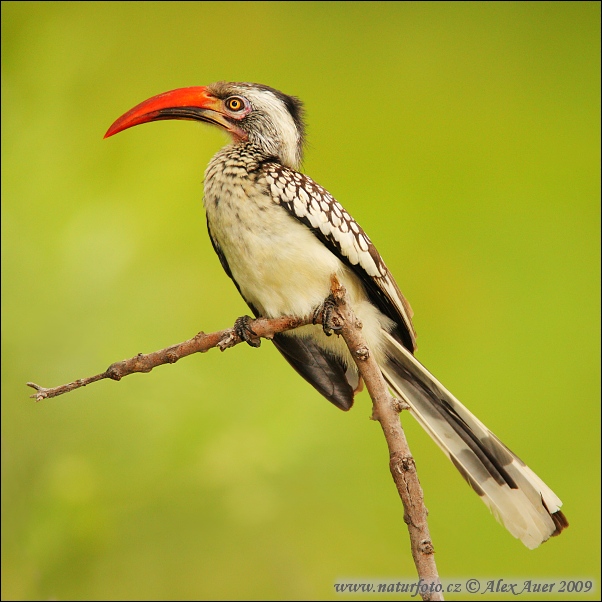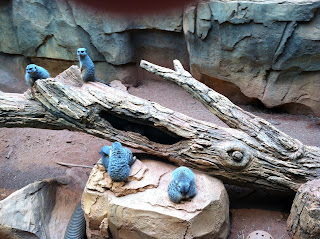Color Books So Far… IR
(1)
What are the TWO most interesting facts / bits of information you’ve come
across so far in your research for the project (include an image for each one,
please).
·
According
to the volunteer I met at the zoo…
o
The
zoo owns two Pygmy Hippos, but only one is on display at a time.
o
Every
animal in the zoo has a behind the scenes enclosure where it is away from
visitors. Most animals have access to their behind the scenes enclosures most of
the time.
o
The
Regenstein African Journey used to be the large mammal house, where the
elephants were!
o
One
of the giraffes is not a Baringo Giraffe, it is some sort of hybrid. The zoo
doesn’t know what combination of species it actually is! (the lighter brown
one).
(2)
What have you accomplished/completed so far in the in the project (background
research, source material acquisition, a first draft, etc?)
So
far I have…
· Visited
the Regenstein African Journey house and taken notes on what is in the order of
exhibits, which species are in each exhibit, the number of species in each exhibit,
and any specific interesting things about the exhibits.
· I
got in touch with a volunteer at the zoo and gave him my e-mail… I haven’t
heard back yet.
· Took
photographs of every exhibit.
· Researched
each species in the Regenstein African Journey House and written a rough draft
of the text that will accompany the images in my coloring book.
(3) What are the
components that you need to focus on and complete in the next week?
·
I need to find information on the
fish. I know that there are Tilapia in both the Pygmy hippo exhibit and the
Dwarf Crocodile exhibit and a large exhibit of cichlids at the end of the
house, but I don’t know much else.
·
I would like to locate a map of
the house. I am told one existed when the house opened, but I need to get in
touch with someone who works at the zoo to find a copy of it.
·
I need to finish writing the
facts and start drawing next week.
4) What is a still
unresolved part of your project that you would like feedback on?
·
I would really like feedback on
the text that I’m having accompany the drawings. I want this book to be
educational in a way that encourages kids to think about an animals physiology
and how it’s form is related to how it functions in it’s habitat. I also want
to hold their interest. Can you guys help me with that? What do you like/don’t
you like/Can you think of anything I should add?
o
I need to figure out the fish
o
What do I say about cockroaches?
o
Is a map necessary? I can’t find
one and I don’t want to draw an inaccurate one.
African Journey – Coloring Book Script so far…
Exhibit 1
·
Abdim’s Stork
o
Can’t find any birds, try looking
up! (arrow)
·
African Spoonbill
o
What a funny beak the spoonbill
has! How do you think this bill helps the bird find food?
·
Black and White Colobus Monkey
o
Hey, do you see any thumbs on
these guys? Colobus monkeys only have a small bump where a thumb usually is!
Instead of using thumbs the way most primates do, they curve their hands into
hooks to swing from branch to branch, take a look at their fingers and imagine
climbing a tree with those fingers!
·
Hadada Ibis
·
Hotentot Teal
o
Hey, these Teal’s kind of look
like ducks. That’s because they are! African Teals are one of the smallest
species of ducks! Do you see their bright blue bill?
Exhibit 2
·
Dwarf Crocodile
o
* Does the crocodile eat the
Fish? – Ask Zookeeper
o
Can you find the crocodile? Try
looking at the surface of the water. Crocodiles and alligators have their eyes
and nostrils on the stops of their heads so that they can see and breathe even when most of
their bodies are under water!
·
Tilapia
Exhibit 3
·
Hissing Cockroaches
o
Not sure what to say about these guys… any ideas anyone?
Exhibit 4
·
Golden Orb Spiders
o
Do you see any glass between you
and the spiders? The spider’s won’t leave their webs because they have
everything they need right there! If you were a spider, what do you think you
would want around your web?
·
Food (flies)
·
Water (droplets on web)
·
Mate (male spider)
o
Female Golden Orb Spiders can be 1.5 - 2 in, not including leg size! Males are much smaller,
jusually only 2/3 the size of the females.
o
Male
spider speech bubble: “Hello my Love.”
Exhibit 5
·
Pigmy Hippo
o
Fish are talking: “Wait, but I
thought hippos were huge?” “You are thinking of the Nile Hippo, which can grow
up to 15 ft long and weigh 8,000 lbs. This is a pigmy hippo, who is only about
5 feet long and 300 lbs!
o
“Will the hippo eat us?” “No, I
think he is a vegetarian. I’m pretty sure he just eats leaves, roots, grasses,
fruit, and aquatic plants.”
·
Black Tilapia
Exhibit 6
Hey did you notice that these birds all have
really different beaks? Each species eats something different, how do you think
their beaks help them find food?
·
Blue Bellied Roller
o
Eats insects
·
Masked Lovebird
o
Eats seeds
·
Red Bill Hornbill
o
Omnivorous (meaning it eats both
meat and veggies, like us), the hornbill gathers fruits, seeds, and insects!
·
Klipspringer
o
“Klip” is dutch for “rock”, so
“klipspringer” literally means rock jumper! How do you think being agile in
such a rocky, vertical environment helps these little antelopes avoid
predators?
Exhibit 7
·
Grant’s Gazelle
o
What nice horns you have! Antelopes
are distinguished by their ‘unbranched’ horns, meaning the horn so no split
apart like a deer’s antlers. Both make and female Grant’s gazelle’s have horns.
What use might these horns be in protecting territory and attracting mates?
·
Baringo Giraffe
o
How tall are these guys? Baringo
giraffes can reach up to 19 ft in height!
o
Take a look at the trees in the
giraffe enclosure! All the foliage has been eaten away to the level the
giraffes can reach with their tongues. Baringo giraffes
use their extremely long (up to 18 inches), manipulative tongues to gather
leaves. How do you think having a tongue like this helps giraffes eat leaves in
hard to reach or thorny places?
o
Can’t see the giraffes? The might
be inside… you will get another chance to look soon!
Exhibit 8
·
Aardvark
o
Can you find the aardvark? He
could be hiding in his den or a dark concealed part of his habitat. Aardvarks
are nocturnal, meaning they sleep during the day and wake up at night!
o
Perhaps he is in his burrow.
Aardvarks dig out their burrows in the wild with their strong spade-like feet.
Do you think this might be a nice place to get out of the heat of the African
sun?
o
What do aardvarks eat? Termites!
Aardvarks have a stick 12 inch long tongue that they use to extract termites
from their mounds!
Exhibit 9
·
Meerkats
o
How many meerkats can you count
here? Meerkats are social animals, they
live in close knit family groups and each member works together!
o
Do you see any meerkats on
lookout? Meerkats have a cooperative system, involving one meerkat always
looking out for predators to protect the group! What is this guy looking out
for?
o
How does the color of their fur
match the color of the sand and rocks? How do you think this might help them
survive in the wild?
Look behind the meerkat exhibit, do you see the giraffes? You can also see them to the right of the African Journey house on your way out the door!
Exhibit 10
·
Cichlids
o
I don’t have any information on this exhibit… I need to talk to
someone.
Thanks for your help everyone!
- Isabella Rotman














Hey Izzy, Stephanie here. I think that a map isn't needed. I think directing all of your attention to the animals and their stories will strengthen your piece and creating a map is a lot of work. While I think it would be cool, it may just be too much work for one person and that effort may detract from your piece.
ReplyDeleteI like how you are asking the viewer "Can you..." instead of "Here is..." very nice :)
Thanks Stephanie! It comforts me to hear you say that. I don't think I'm doing to map... its enough work as it is.
Deleteglad you like the questions! I was worried they sounded condescending, but they are for children after all.
Hey darlin, Tanner here! I like the concept of your project a lot! It is very involved and the facts are nicely written, so I dont think you have a lot to worry about there. Here are a few questions and comments to think about:
ReplyDelete-What is the relation to creativity and the zoo? Perhaps you can include facts about the color, texture, and purpose of different animals. I think it seems only natural that you relate the artistic details of the animals when children are coloring.
-What can you do to engage adults who are possibly reading the facts to their kids? Maybe give them information about endangered species, the zoo's efforts, etc.
-Where will the coloring book be purchased or given out? Maybe it could be a part of the zoo's educational resources or programs. You could even think about making a coloring book specifically for the nights that the zoo has where kids can sleep over/make the book into a fictional story about what the zoo animals do at night and throw in facts here or there? Just an idea. I like the straight on educational approach, but it might be more fun to be creative and suit a specific purpose.
-You may want to cut down how many animals you are showing. It may be overwhelming to you and to the kid coloring. Do you want the book to be colored durring the visit at the zoo, or at home? (if at the zoo, you may want to think about packaging and providing crayons)
-I like how many of the animals you chose are not the zoo's most popular attractions. This could be the books sole purpose. If you skip the giraffes, lions, apes, etc. It could draw (pun intended) people towards the less noticed animals.
***Anyway, You have a solid project, and a lot of work ahead of you! I wish you good luck!
May the force be with you,
Tanner Bowman
Hello!
ReplyDeleteI was just thinking about the roaches, and I think the easiest approach would be to talk about their appearance in relation to other roaches,and where they are placed geographically. I would say to use the hissing element to your advantage, but it's a bummer you can't hear them through the glass.
-michelle